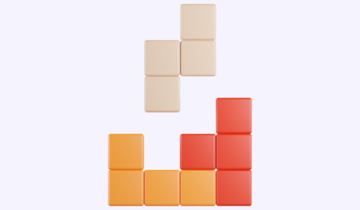Suffering from intrusive memories and flashbacks after trauma can be a common challenge for those living with some mental disorders, such as posttraumatic stress disorder (PTSD). These memories can persist for years, having profound impact on the lives of those experiencing them by surfacing repeatedly and unexpectedly. While forgetting intrusive memories may seem to be a way to move forward, some therapies take what appears to be a counterintuitive route: deliberately recalling traumatic memories. The goal is to transform flashbacks into more standard, non-intrusive memories.

Playing computer games like Tetris make it difficult to hold other visual images in your mind - a technique which is used to interfere with intrusive memories.
While these therapies have seen success, lack of quantifiable data has meant it has been difficult to validate experimental or clinical evidence. Researchers have been plugging this gap by using both psychology and biology to develop a mathematical description of intrusive memories, aiming to support effective treatment of trauma. This mathematical view allows researchers to predict the effect of therapies and then evaluate these predictions against outcomes. Pulling from both disciplines of psychology and biology also enables them to combine the neural mechanisms associated with memory, such as networks of neuron interactions, with broader cognitive processes such as memory retrieval and perception.
Interventions and reminders are two critical aspects of these therapies. Interventions are tasks which interfere with an intrusive memory – for example, playing a computer game like Tetris makes it difficult to hold other visual mental images – while reminders (very brief cues associated with the trauma) reactivate the intrusive memory to mind. The researchers found that the strengths of both the intervention and reminder can determine success in managing intrusive memories; the best outcomes were seen when low strength interventions were used in combination with gradually weakening reminders. Professor Mike Bonsall said:
Validating the findings with data shows how relatively simple maths can be used to help us unravel some of the complexities of our minds. This research shows that trauma memories can be understood better when we look at it from an interdisciplinary angle, and that alterations to tasks and reminder strengths might improve how we manage them.
The researchers now plan to develop the framework further, using it to compare more data and continuing to work on the maths of memory, with the aim to support clinical outcomes in managing intrusive memories.
To read more about this research, published in Journal of the Royal Society Interface, visit: https://doi.org/10.1098/rsif.2023.0108